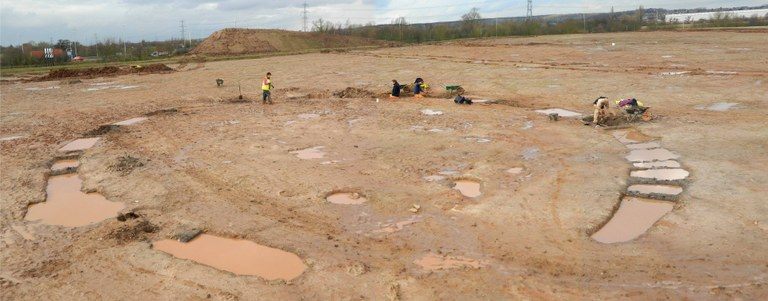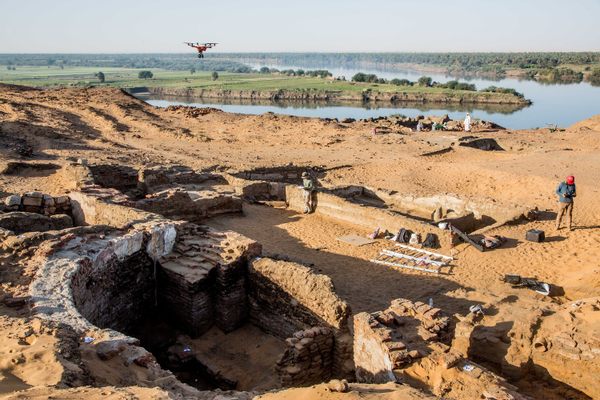Found: 11 Iron Age Cauldrons and More Metalwork in an English Field
They’re evidence of a long tradition of ceremonial feasting.

In 1993, engineers working on road construction near Glenfield Park in England’s Leicestershire County ran into ancient remains dating to the Late Bronze Age and Middle Iron Age. Now, after more than 20 years, archaeologists further exploring the site have determined that it may have hosted years of Iron Age rituals and ceremonies. The key pieces of evidence are an involuted brooch, a copper alloy object known as a horn-cap, some dress pins, a variety of other pieces of metalwork—and 11 cauldrons, some arranged in a circle.
“Taken together this is a highly unusual assemblage, unique both locally and regionally, but the inclusion of the cauldrons heightens the importance of the find significantly, to one of international importance,” said John Thomas, project manager at University of Leicester Archeological Services, in a recent press release.
The site, which is being developed for a warehouse, also provides an interesting glimpse into the evolution of communal life in the Iron Age. During the fifth and fourth centuries B.C., the settlement was relatively small and organized in a circular fashion, with the houses in pairs. By a century or so later, the households were no longer paired, but individually enclosed, suggesting a shift towards greater individualism.
One larger enclosure was located slightly away from the main settlement core, and it was there that eight out of the 11 pots were found, suggesting it was a ritual center, where the pots may have been used to prepare ceremonial feasts. “Iron Age cauldrons would have been important social objects forming the centrepiece of major feasts, perhaps in association with large gatherings and events,” said Thomas. The other three metal cooking pots were scattered around the village.
The fragile cauldrons were packed up with the surrounding soil and taken to the Paul Strickland Scanner Centre, a medical imaging facility with equipment large enough to accommodate them for CT scans. “We weren’t sure what to expect, but the scanning produced some stunning results,” Thomas said. “We learnt some very useful information about cauldron orientation, approximate dimensions and profiles, as well as tantalizing glimpses of manufacturing methods, and even decoration.”
Liz Barham, a conservator at Museum of London Archaeology, has examined one cauldron more closely and found that it was broken and repaired multiple times, suggesting it was used extensively. Among the next steps are looking for food residues in the pots to see what the Iron Age people of Glenfield liked to feast upon.




















Follow us on Twitter to get the latest on the world's hidden wonders.
Like us on Facebook to get the latest on the world's hidden wonders.
Follow us on Twitter Like us on Facebook